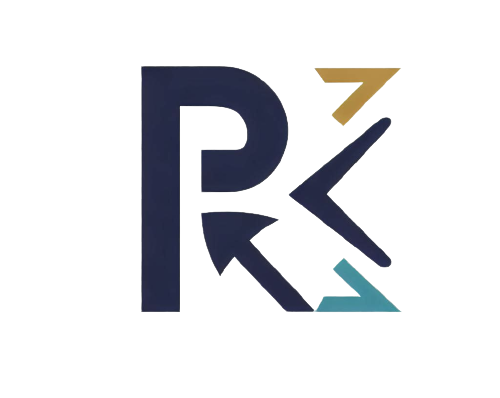The Early Days: HTTP/1.0
In the infancy of the World Wide Web, the Hypertext Transfer Protocol (HTTP) emerged as the backbone of web communication. HTTP/1.0, the initial version of the protocol, laid the groundwork for the modern internet we know today. During this era, HTTP/1.0 introduced the first set of HTTP status codes, which played a fundamental role in shaping the web browsing experience.
This status code signaled that the client’s request was successfully received and processed by the server. It indicated that the requested resource was available and accessible.
Perhaps the most recognizable status code, 404 indicated that the server could not find the requested resource. It became synonymous with dead links and missing web pages, prompting the now-familiar “404 Error” message.
This status code signaled an unexpected condition on the server that prevented it from fulfilling the client’s request. It was a catch-all designation for various server-side errors and issues.
During the HTTP/1.0 era, status codes primarily served to provide basic feedback on the outcome of client-server interactions. They helped users understand whether their requests were successful, encountered errors, or failed to locate resources.
HTTP/1.0’s status codes laid the foundation for future iterations of the HTTP protocol, establishing a standardized system for communicating between web servers and clients. While HTTP/1.0 eventually gave way to newer versions of the protocol, its contributions to web communication and status code standardization remain significant to this day.
The Rise of HTTP/1.1 and Standardization
As the internet continued to grow and evolve, the need for a more advanced and standardized protocol became evident. This led to the development and adoption of HTTP/1.1, a significant milestone in the history of web communication. HTTP/1.1 brought about several improvements and enhancements over its predecessor, HTTP/1.0, including the expansion of status codes and the introduction of standardized conventions.
One of the key features of HTTP/1.1 was its focus on standardization and interoperability. With HTTP/1.1, the Internet Engineering Task Force (IETF) sought to establish a unified set of protocols and guidelines to govern web communication. This standardization effort aimed to ensure consistency and compatibility across different web servers, browsers, and devices.
HTTP/1.1 introduced several new status codes and refined existing ones to provide more detailed and informative responses to client requests. Some of the notable additions included:
- 301 (Moved Permanently): This status code indicated that the requested resource had been permanently moved to a new location. It instructed clients to update their bookmarks and references accordingly.
- 302 (Found): Unlike the 301 status code, which signaled a permanent redirection, the 302 status code indicated a temporary redirection. It informed clients that the requested resource could be found at a different location for the time being.
HTTP/1.1 introduced mechanisms for persistent connections and content negotiation, allowing for more efficient and flexible communication between clients and servers. These improvements helped to reduce latency, improve performance, and enhance the overall user experience.
The rise of HTTP/1.1 marked a significant step forward in the evolution of web communication. Its emphasis on standardization and interoperability laid the groundwork for future advancements in web protocols and technologies. While HTTP/1.1 has since been succeeded by newer versions of the HTTP protocol, its contributions to the modern internet landscape remain foundational and enduring.
Modernization and HTTP/2
HTTP/2 introduced multiplexing, allowing multiple requests and responses to be sent and received over a single TCP connection simultaneously. This multiplexing capability significantly reduced latency and minimized the overhead associated with establishing multiple connections.
HTTP/2 implemented header compression techniques to reduce the size of HTTP headers exchanged between clients and servers. By compressing headers, HTTP/2 reduced bandwidth consumption and improved data transfer efficiency.
HTTP/2 introduced server push functionality, enabling servers to proactively push resources to clients before they are requested. This preemptive resource delivery mechanism minimized the need for additional client requests, further reducing latency and improving page load times.
Unlike its predecessor, which relied on plain text for communication, HTTP/2 adopted a binary protocol format. This binary encoding streamlined data transmission and reduced parsing overhead, resulting in faster and more efficient communication between clients and servers.
The adoption of HTTP/2 brought about tangible improvements in website performance and user experience. Websites optimized for HTTP/2 benefited from faster page load times, reduced latency, and enhanced responsiveness, leading to higher user satisfaction and engagement.
HTTP/2 laid the groundwork for future innovations in web communication, providing a scalable and efficient foundation for the evolving demands of the digital landscape. While HTTP/2 continues to be the prevailing protocol for many websites, ongoing advancements in web technologies and protocols, such as HTTP/3, promise to further push the boundaries of performance, efficiency, and reliability in web communication.
Notable Changes and Additions
Throughout the evolution of the HTTP protocol, various changes and additions have been made to accommodate emerging technologies, address new use cases, and enhance the overall functionality of web communication. These changes have introduced new status codes, refined existing ones, and provided additional context for client-server interactions.
As whimsical as it may sound, the 418 status code, “I’m a teapot,” was introduced as an April Fools’ joke in RFC 2324. While not intended for serious use, it humorously indicates that the server is incapable of brewing coffee or teapot-related tasks, adding a touch of levity to the world of web communication.
The 451 status code reflects instances where access to a resource is denied due to legal restrictions, such as censorship or copyright infringement. Introduced to address legal and regulatory concerns, this status code provides transparency regarding the unavailability of certain resources for legal reasons.
Similar to the widely recognized 301 status code, the 308 status code indicates that the requested resource has been permanently moved to a new URL. However, unlike the 301 status code, which allows clients to switch to GET requests, the 308 status code requires clients to maintain the original request method when redirecting to the new URL.
With the increasing emphasis on rate limiting and throttling in web applications, the 429 status code was introduced to signal that the client has exceeded the rate limit for requests to a particular endpoint. This status code helps prevent abuse and ensures fair access to server resources for all clients.
The 511 status code indicates that the client needs to authenticate itself to access the network. Unlike other authentication-related status codes, which apply to server authentication, the 511 status code pertains specifically to network authentication requirements, providing clarity on the nature of the authentication challenge.
Looking Ahead: HTTP/3 and Beyond
As the internet continues to evolve, so too does the landscape of web protocols. While HTTP/2 has ushered in significant improvements in performance and efficiency, the development of HTTP/3 promises to push the boundaries even further.
At the heart of HTTP/3 lies the QUIC (Quick UDP Internet Connections) protocol, which aims to address some of the limitations of TCP (Transmission Control Protocol) used in HTTP/1.x and HTTP/2. QUIC operates over UDP (User Datagram Protocol) and incorporates features such as connection multiplexing, congestion control, and encryption, leading to faster and more reliable communication between clients and servers.
HTTP/3 builds upon the foundations laid by HTTP/2, introducing further optimizations for data transfer and resource loading. By leveraging QUIC’s capabilities, HTTP/3 reduces latency, minimizes connection setup times, and enhances overall responsiveness, resulting in a smoother and more efficient browsing experience for users.
One of the key benefits of HTTP/3 is its resilience to network fluctuations and packet loss. By operating over UDP, HTTP/3 can quickly adapt to changing network conditions, ensuring reliable delivery of data even in challenging environments. This resilience is particularly valuable for users accessing the web over mobile networks or in regions with unreliable internet connectivity.
HTTP/3 is designed with forward compatibility in mind, allowing for seamless integration with existing web infrastructure and protocols. Furthermore, its extensible nature enables the incorporation of future enhancements and optimizations, ensuring that HTTP/3 remains adaptable to the evolving needs of the internet ecosystem.
While HTTP/3 offers compelling benefits, its adoption may require careful consideration and planning. Migration to HTTP/3 involves updates to server and client software, as well as potential adjustments to network configurations. As such, organizations and developers should assess the feasibility and impact of transitioning to HTTP/3 based on their specific requirements and infrastructure.
